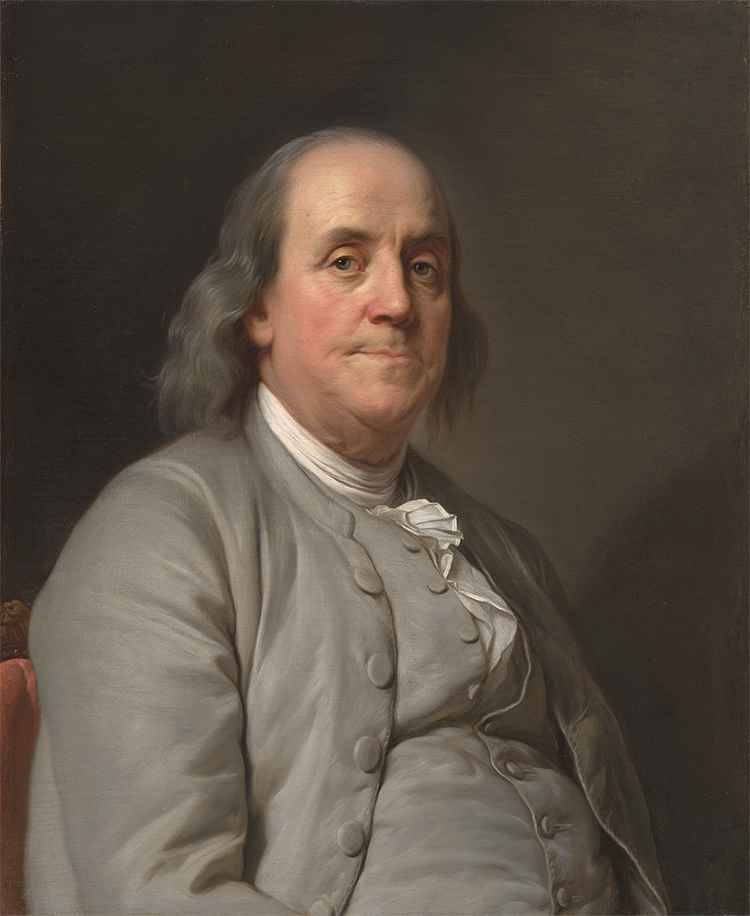Benjamin Franklin (1706–1790)

Benjamin Franklin, 1706–1790 | Born Boston, Massachusetts | Joseph Siffred Duplessis (1725–1802) | Oil on canvas, c. 1785 | Gift of the Morris and Gwendolyn Cafritz Foundation
Benjamin Franklin was the most famous American in the world in his day. He was renowned for his scientific accomplishments as much as for his political and diplomatic triumphs. Known as a “natural philosopher,” as scientists were termed in the eighteenth century, he was celebrated for his experiments with electricity and his inventions, notably the wood-burning stove and bifocal eyeglasses. He also reorganized and expanded the American Philosophical Society in Philadelphia and served as a conduit for correspondence between Americans and Europeans who were studying botany, chemistry, physics, and other sciences.
By the mid-1780s, when this portrait was created, Franklin was living outside Paris and representing the interests of the revolutionary American government to the French court. Joseph Siffred Duplessis was the court painter at the time and received commissions from friends and admirers of Franklin to create his portrait. Duplessis helped solidify Franklin’s social and intellectual stature through his paintings. This portrait continues to contribute to the recognition of Franklin, as it is the same portrait printed on the hundred-dollar bill.
- Describe Franklin’s hairstyle, clothing, pose, and facial expression. How might you describe his personality or disposition?
- By the time Franklin sat for Duplessis, Franklin had become somewhat of a celebrity in Europe, and he understood the importance of his image. Based on Duplessis’ likeness of Franklin, how might someone from France who has not been to the United States describe the US?
- As the viewer of the portrait, our eye is guided to Franklin because there are no objects in this portrait and the setting is unclear. Based on what you know about Franklin, what elements might you add to this painting represent who he was?